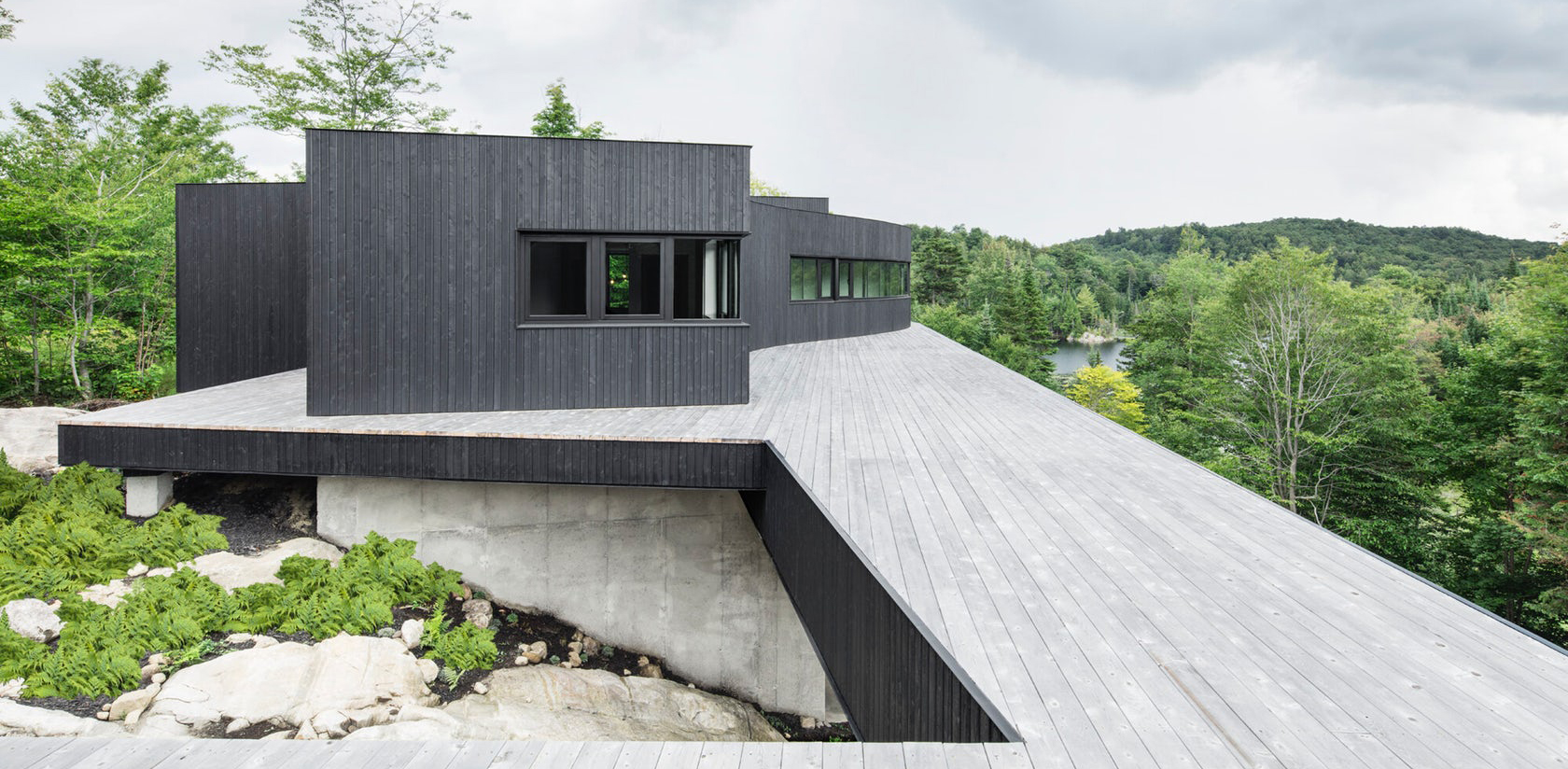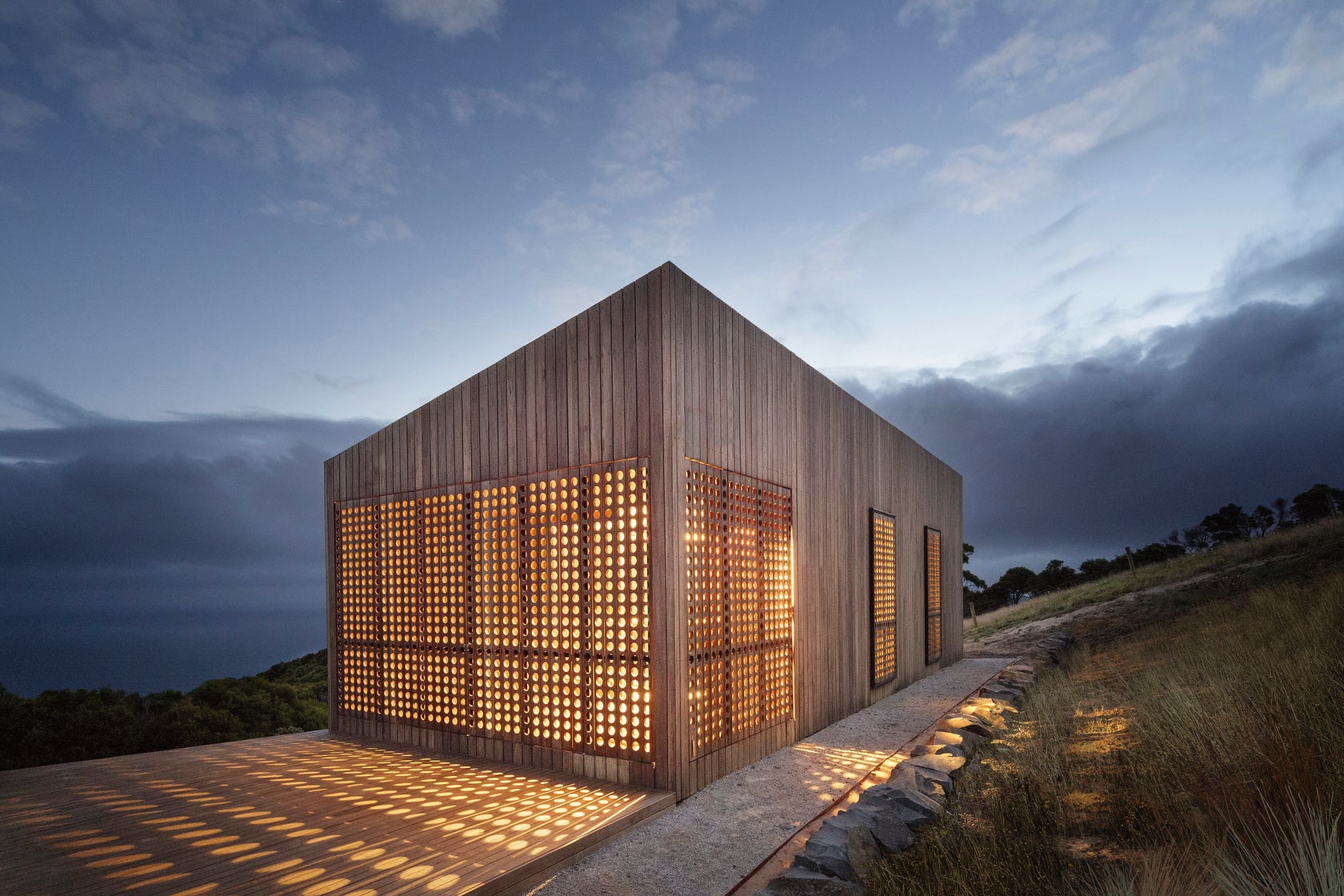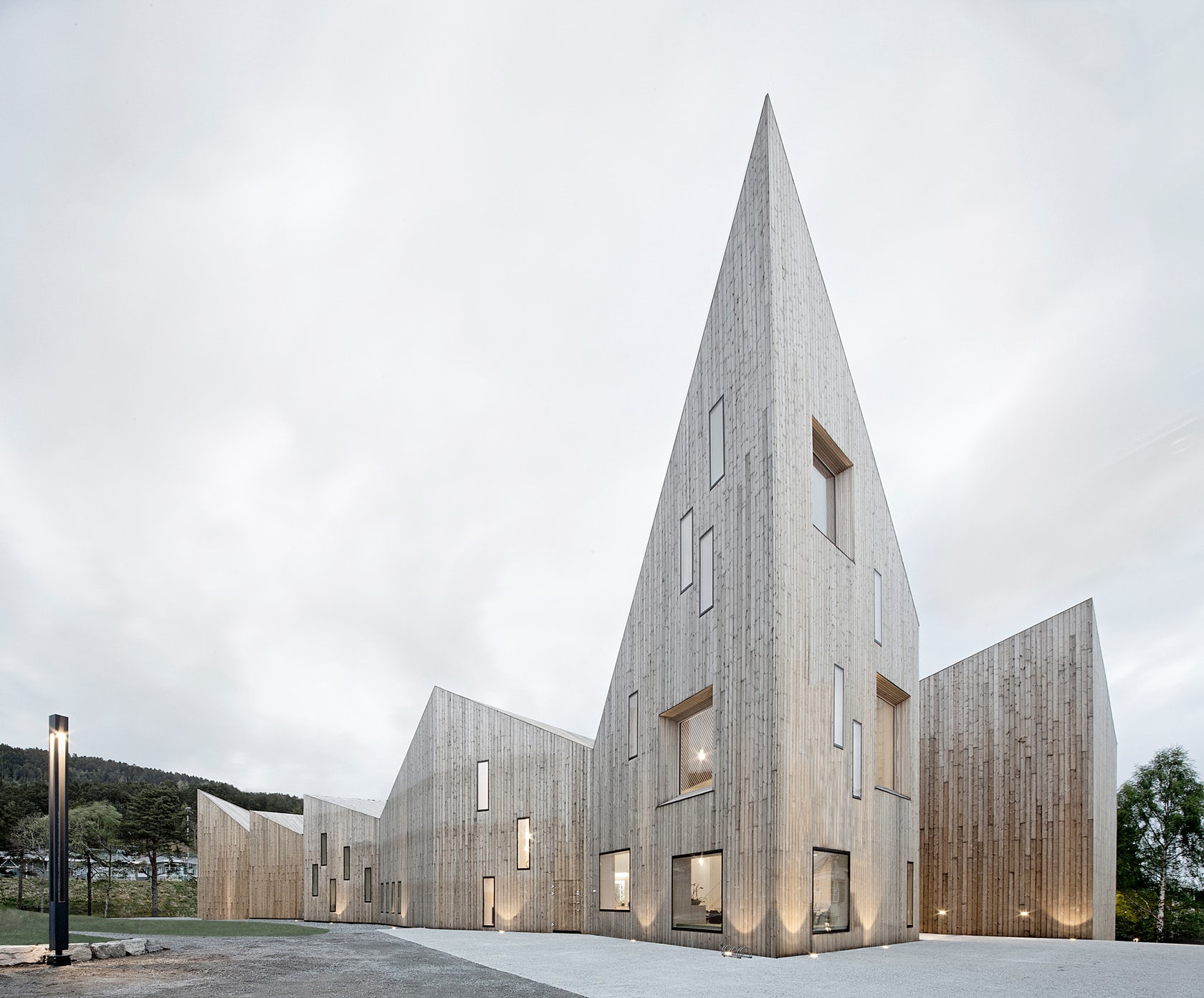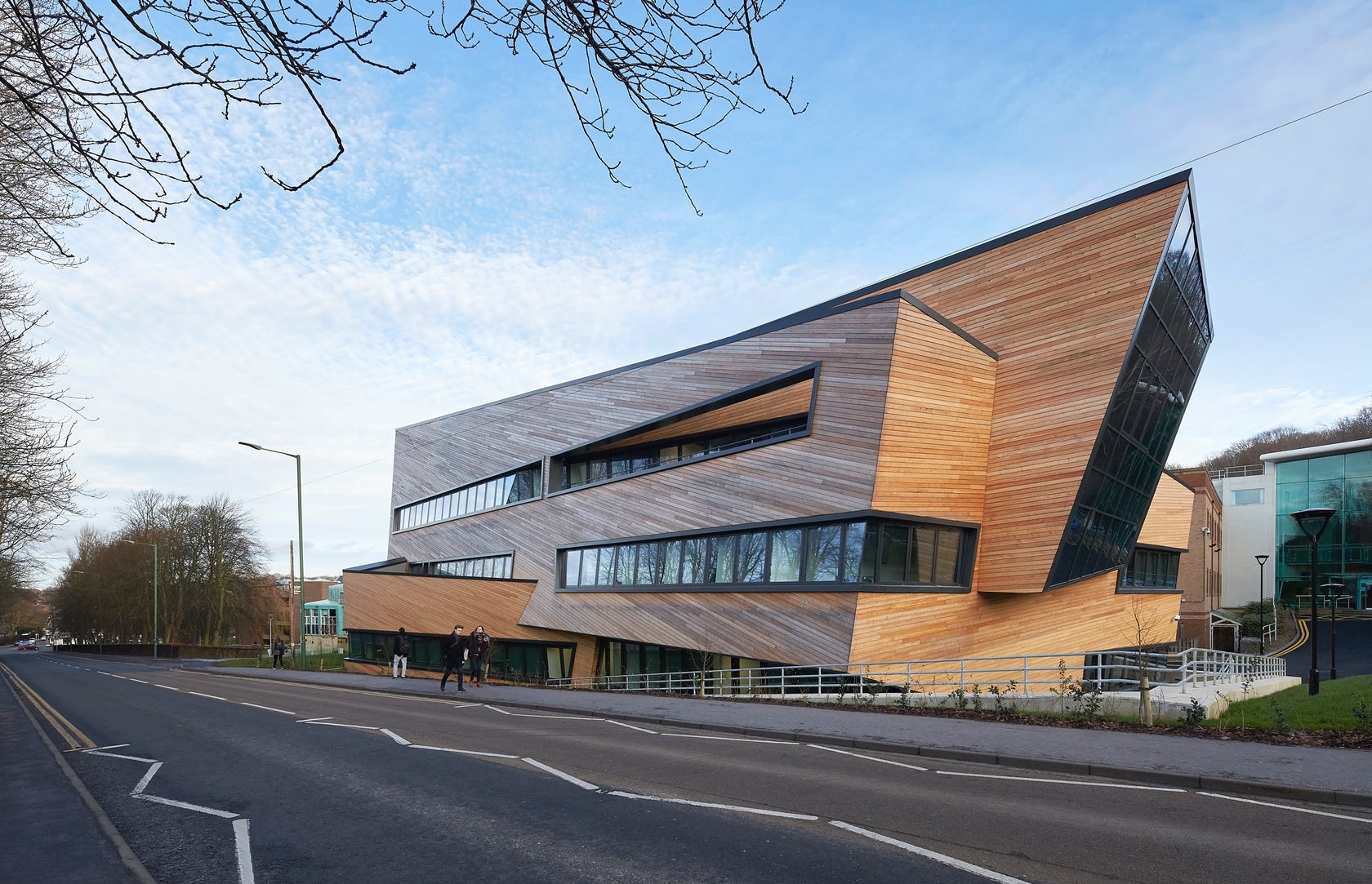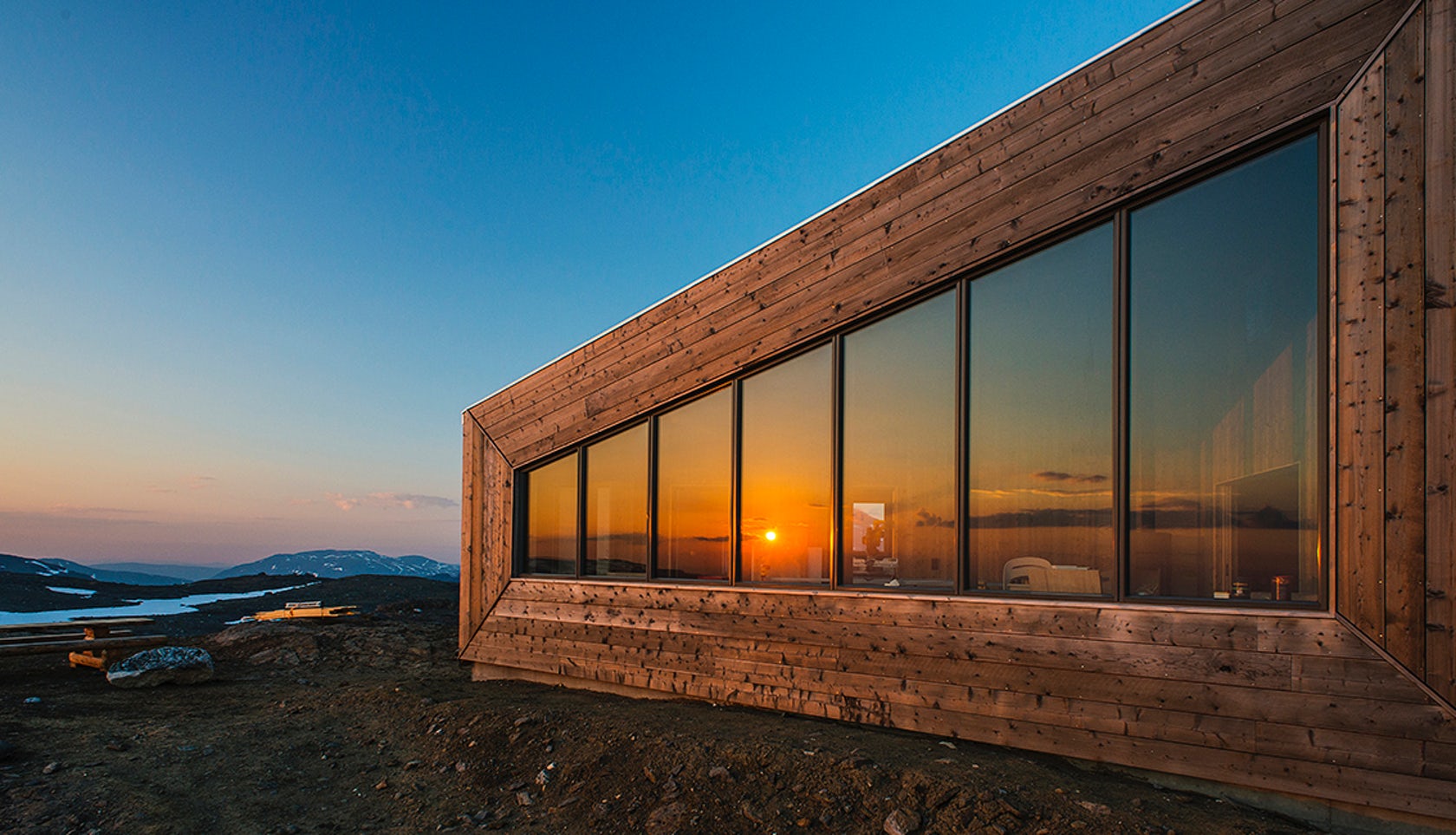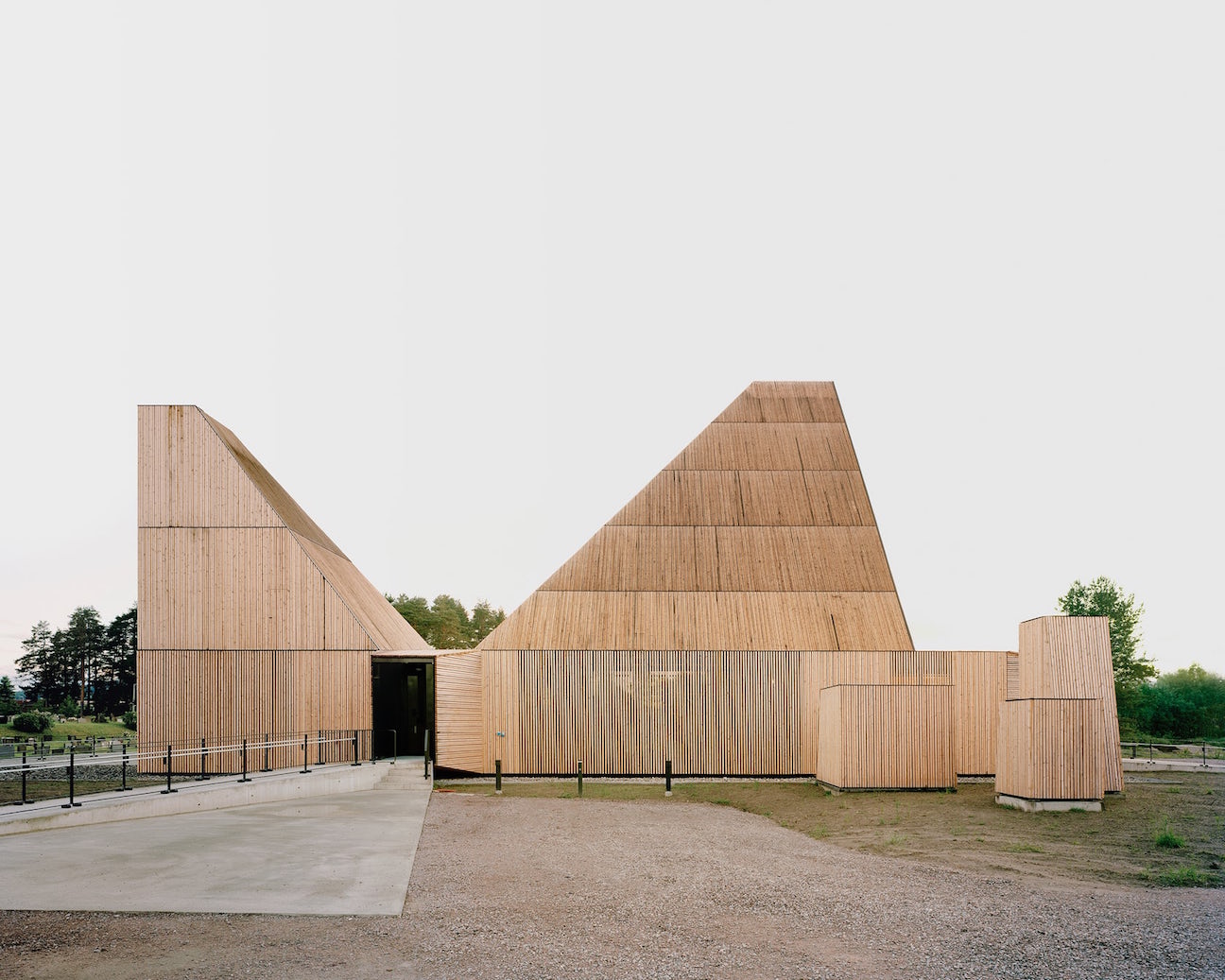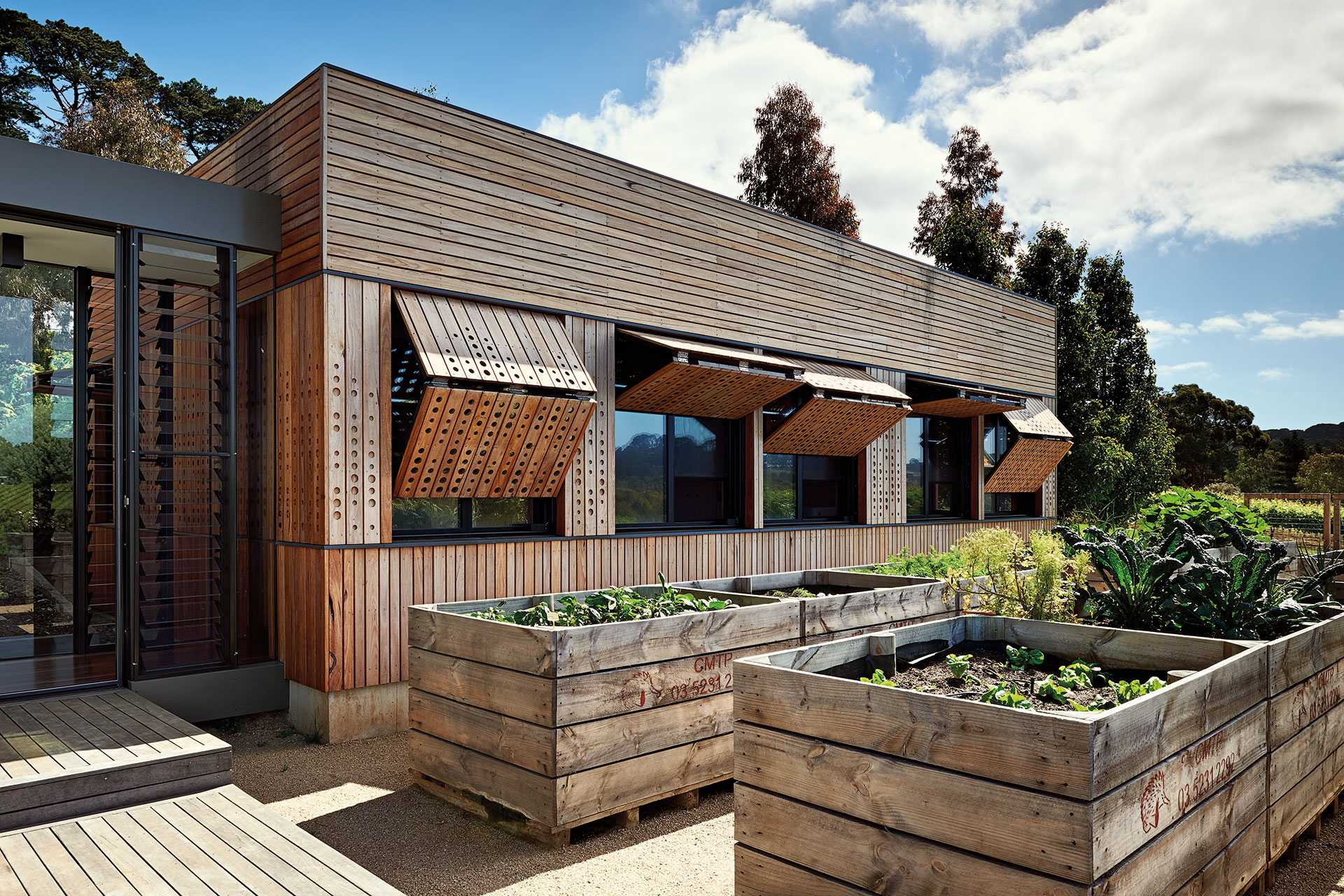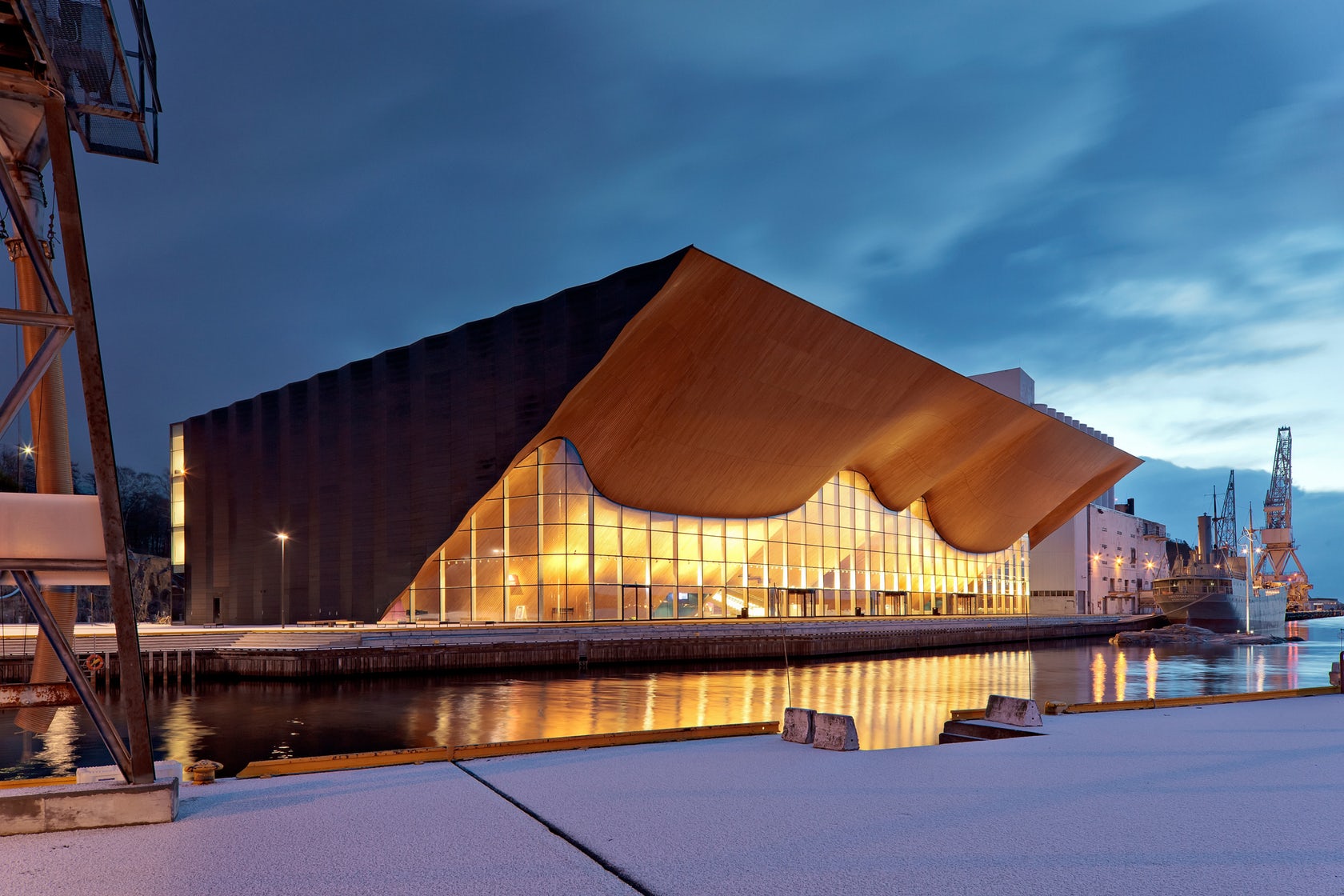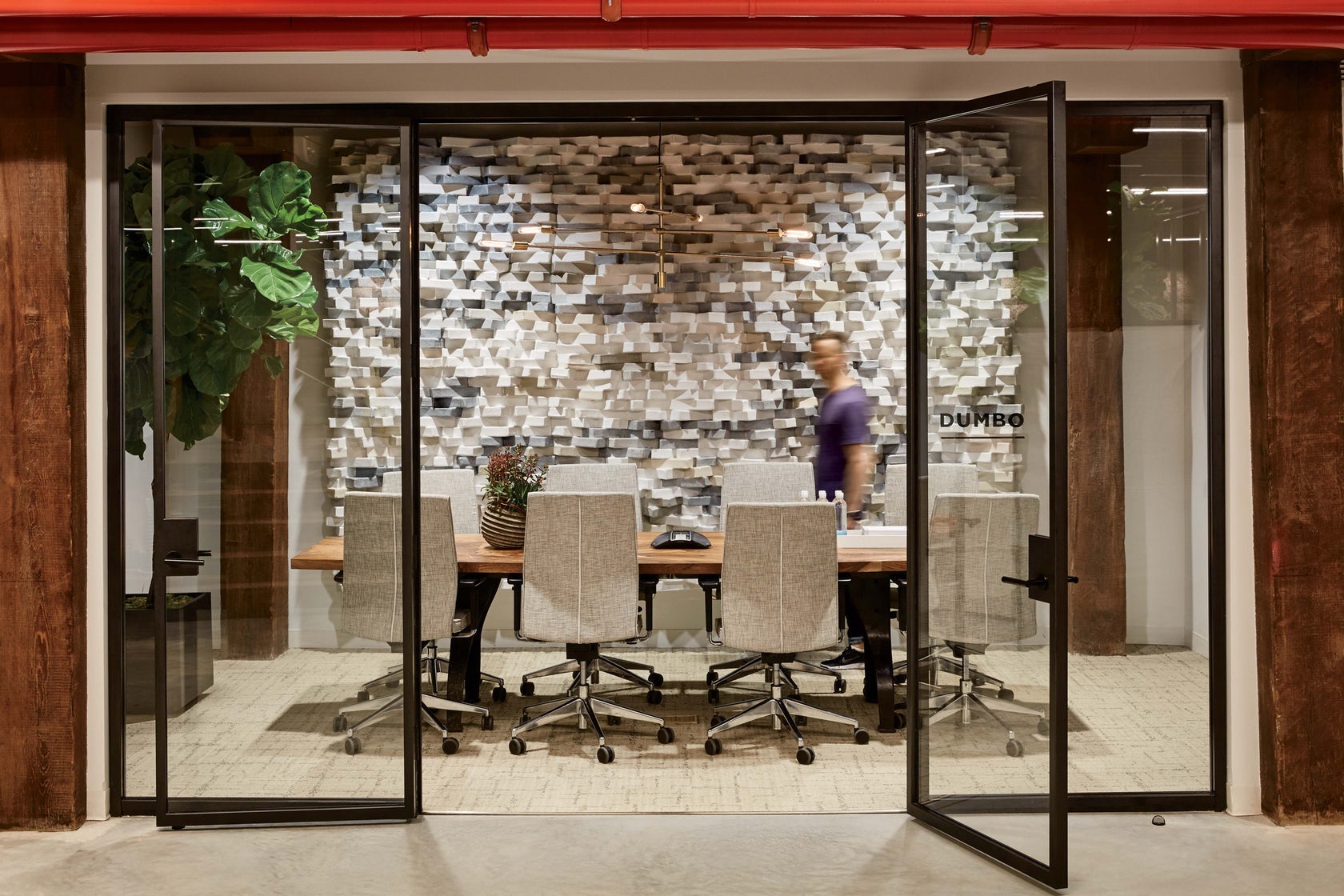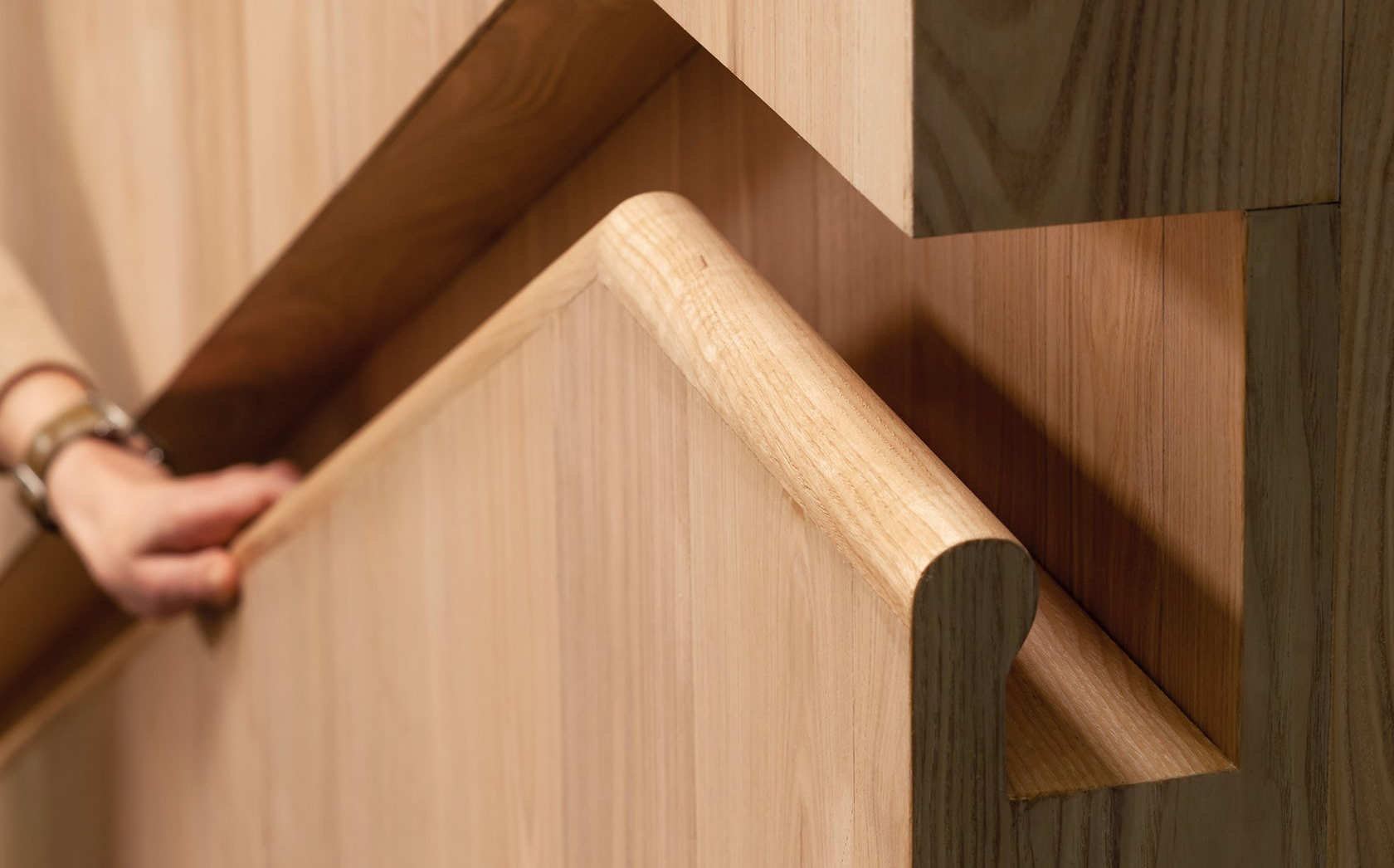Architects: Want to have your project featured? Showcase your work through Architizer and sign up for our inspirational newsletters.
You could say that wood siding is the grandpa of architecture — full of knots, easily bent out of shape and been around for a while. Very similar in its applications to other cladding materials such as metal and veneer, wood siding is most commonly harnessed as a rainscreen, meaning that it works to keep moisture out of the building while protecting the rest of the wall package from damage.
What really distinguishes wood siding from other cladding options, like metal or brick, is that wood was once a living thing. That means it does not hold up in quite the same way that inorganic materials might. Wood siding will age after just a season or two, to say nothing of years or decades. But that is not necessarily a bad thing.
Cedar boards take on an elegant gray patina, and reclaimed barn siding is prized for its nicks and scratches. Furthermore, treatments, stains and paints can help keep wood in shape for many years. Just like all of us, what wood siding needs most in order to ensure graceful aging, is a little TLC.
Search for Wood Siding Manufacturers
A big pro of conventional wood siding is that almost any builder knows how to install it and can talk you through the pros and cons of this common building-product. That said, it never hurts to build your knowledge as you seek the perfect cladding for your project — read up on the basics and discover everything you need to know for specification below.
Materials
Wood Type: One of the most common species of wood in architectural applications is cedar due to its natural resistance to rot and decay. Other species include spruce, pine, fir and engineered woods. Before choosing the species of wood that you will use for your project, glance over How to Select The Right Species of Wood For Your External Cladding. In addition, the Western Wood Products Association (WWPA) has great information about the structural performance and characteristics of wood species.
Wood Grade: Since wood siding is generally only rated on its appearance, building codes do not govern grading. While most suppliers follow grading systems from agencies like the WWPA, they are largely on their own to select their wood grades. It is always best practice to examine and compare the samples before purchase. Common terms and designations include:
- Clear: Clear indicates that the wood is without defect and free of knots. In general, the fewer the knots, the more expensive the wood will be.
- Number 1: Number 1 wood is high quality and relatively clear, providing a very high-level finish.
- Number 2: Number 2 indicates that the wood will have more knots than Number 1 wood, and is therefore a bit less expensive. That being said, Number 2 wood is still very good quality.
- Grade A to Grade D: Grade A wood provides a blemish-free surface. Grade D wood has larger knotholes as well as some splits and checks on the surface.
Aesthetics
Orientation: The main question to ask is: Should I use horizontal or vertical boards? Choosing the orientation of wood siding is more than an aesthetic choice; it has an impact on cost and upkeep. Vertical siding can be easier to maintain and clean, but it can be more expensive to install because firring strips need to be added behind the boards before they are nailed in. Vertical boards also generally take longer to install, making for higher labor costs. Horizontal siding is initially cheaper, but it can be harder to clean and maintain because water can seep upward in between the boards, causing rot and mold growth.
You can also do a range of other orientations at any angle, but these will generally be considered out-of-the-ordinary by builders and will probably require special detailing attention.
Style: Wood siding is available in boards and shingles, both of which come in a variety of shapes and configurations.

Standard wood board installation diagrams; image via DIY Network
- Boards: Boards can be vertically or horizontally arranged in a variety of configurations, which include board-and-batten, lap, clapboard, tongue-and-groove and trim boards. Boards are sold in nominal thicknesses, with dimensions between ¼ to ½”. In addition, boards are generally 4”-12” wide and 8’-16’ long.
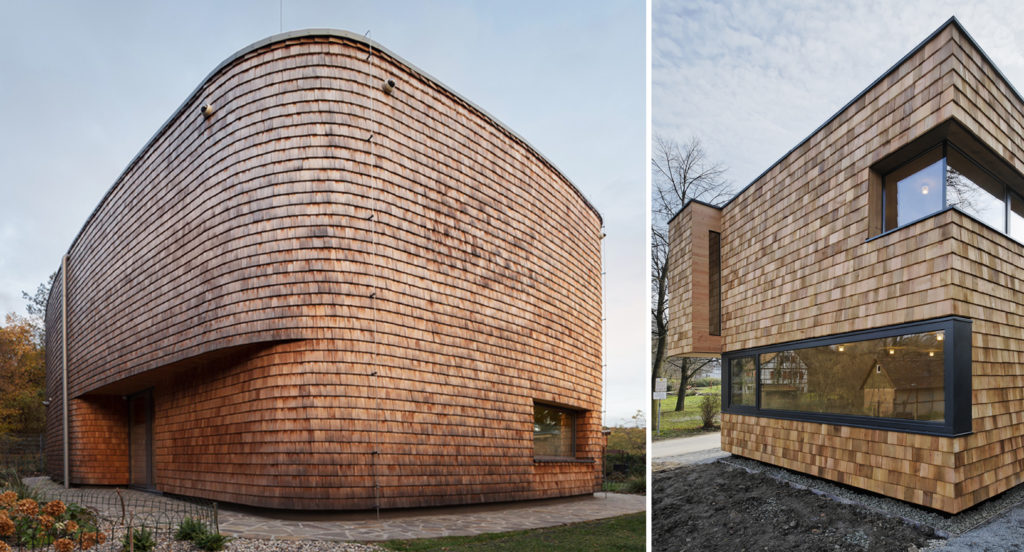
Left: Family house in Dobris by Mimosa Architects is covered in larch shakes; right: The shingle-clad Youth-Club Extension by Bernd Zimmermann Architekten
- Shingles: Shingles provide a refined, classic appearance compared to shakes, which tend to be more rustic in style. Shingles come in a variety of shapes, including half-rounds and octagons. Custom precut profiles can also be requested to achieve a desired visual effect.
Color and Finish: Finishes impart colors and can have a greater impact on the life span of the product than the wood species alone. Depending on which species is selected, many different finishes are possible; manufacturers can assist you in choosing.
Keep in mind that lighter woods such as redwoods and cedars hold onto paint better than other woods because of the timing with which they grow. Lighter wood generally results from early springtime growth and darker wood from later summer growth. Paint has a hard time holding onto darker wood, so painted woods that have a very visible grain will age poorly, as compared to woods that don’t have a very strong grain like, you guessed it, redwoods and cedars. These species expand and contract less with the change of seasons and fluctuations in temperature, so they are less prone to warping and shedding any layers of paint on them.
Shou Sugi Ban: One of the most popular trends in wood siding is shou sugi ban — the traditional Japanese technique of charring wood to make it more durable. It gives the wood a charming burnt texture, black color and surprising durability. More information on this and an interview with manufacturer Delta Millworks can be found in Mastering the Architectural Art of Traditional Japanese Charred Timber.
Performance
Durability: Basic wood siding may need to be refinished every couple of years because rain and bugs can destroy it. More sophisticated treated timber products like Accoya and Kebony can, hypothetically, last much longer, even decades. Accoya is impregnated with acetyl alcohol, which resists rot and water damage. Certain species of wood, like redwoods and cedars, are also more naturally durable and have chemicals in them that are unappetizing to termites and other pests.
Moisture Content: Wood should be installed close to its equilibrium moisture content for the local climate. More information on this can be found here.
Surface Treatment: Many types of surface treatments exist. For example, thermal treatments use high temperatures and steam to help naturally protect the wood from decay, surface splitting and warping. This method works by reducing the moisture content of the wood. Other common treatments are primers (Alkyd-oil or water-based), mold inhibitors, kiln dried and preconditioned.
Acoustic Insulation: Wood siding generally provides limited sound insulation between the external and internal environments. However, specify whether you have acoustic insulation requirements. Suppliers often calculate whole-of-wall ratings, factoring in the weighted sound reduction index or the Sound Transmission Class (STC) of the insulating infill-wall products.
Thermal Insulation: Wood siding systems often contribute little to overall wall insulation values, so it’s likely necessary to attach a sheathing board to the external face of the infill walls for weather and thermal resistance. However, if your building has a minimum U-value and you need the siding to help reach it, highlight this to the manufacturer.
Environmental: Life-cycle assessment (LCA) considers the total environmental impact of a material over its lifespan. When choosing wood siding, you may wish to apply life cycle thinking to address the material’s environmental impact. Think about the overall emissions during manufacturing, transportation and installation, the maintenance requirements over time and the potential for recycling.
Case Studies
8 Dynamic Wood Façades Built with Kinetic Cladding
Whether looking to take advantage of wind patterns or bring daylight into a space, contemporary projects have begun exploring the potential of kinetic and operable façades. Modern wood-clad façades are no exception, where building envelopes are programmed to enhance interior conditions through haptic connections and integrated systems. In this collection, explore 8 stunning wood façades that were thoughtfully designed to encourage exchange and accommodate varied levels of privacy. Check out the full story here.
Limber Timber: 6 Curvaceous Wood-Clad Façades
There are no straight lines in nature. Trees, with their rounded trunks and supple branches, are no exception. The naturally sinuous qualities of wood are often lost as trees are milled into flat boards, to be used as cladding on rigidly rectilinear buildings. This collection, features projects that take a different approach. These façades bend, twist and undulate to show us that architecture can be clad in wood without being so wooden. Check out the full story here.
How to Detail Weather Resistant Wood Siding
Not only does wood move, swell and shrink in accordance with the natural environment, but it is also eager to suck up and absorb moisture, especially at its field cuts. Therefore, from preliminary design to final execution, it is absolutely critical to remember that the context and exterior conditions of your building mean everything. The most successful architectural usages of wood siding will be those that can properly control and manipulate the moisture that it will inevitably encounter during its lifespan. This article will help you understand how to do so. Check out the full story here.
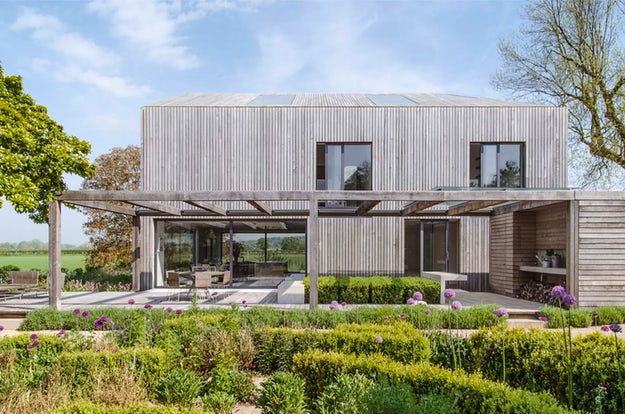
House in Oxfordshire by Peter Feeny Architects is entirely clad in oak
How to Select the Right Species of Wood For Your External Cladding
When applied as external cladding, the service lives of various species of timber can range anywhere from 15 to 60 years. That’s a massive, gaping window of time where colors can fluctuate, cracks can occur and extreme weathering can take place. And so, while cost and aesthetic style will always be driving factors in your material selection, make sure to read through this article, which will help you understand how a wood species’ performance factors will level up to your design needs. Check out the full story here.
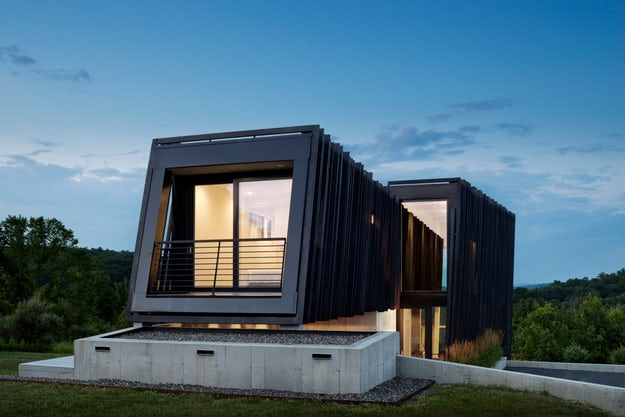
Image via Delta Millworks
Mastering the Architectural Art of Traditional Japanese Charred Timber
The art of shou sugi ban is simple to understand in theory but difficult to carry out. It is a counterintuitive method of preserving and protecting wood by charring it with fire, which leaves a dense carbonized layer of bituminous black that’s virtually fireproof. Sleeve House by actual / office, is a recently completed 2,500-square-foot building constructed in collaboration with one of America’s pioneering wood manufacturers, Delta Millworks, and an unmatched example of this age old practice. Check out the full story here.
Search for Wood Siding Manufacturers
Architects: Want to have your project featured? Showcase your work through Architizer and sign up for our inspirational newsletters.
